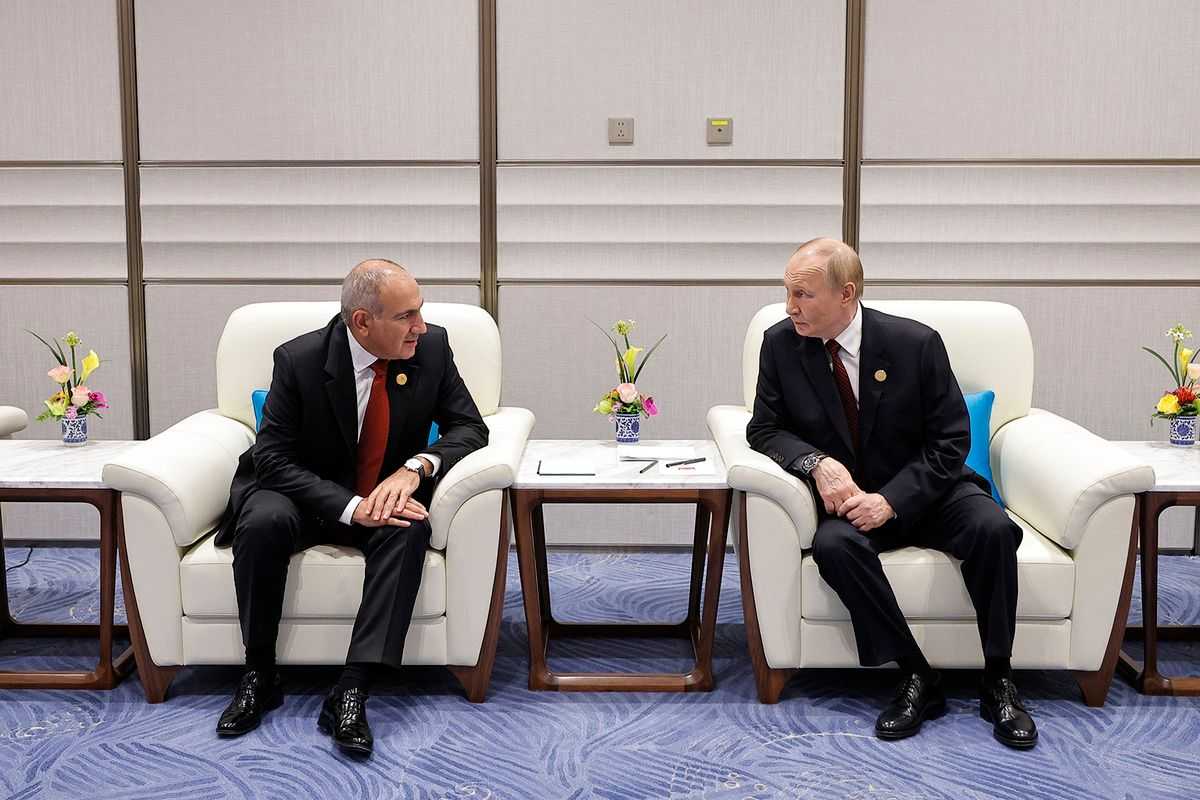
Representatives of Nagorno-Karabakh have met with Azerbaijani officials in the central Azerbaijani city of Yevlakh, to discuss the future of the region following Nagorno-Karabakh’s surrender.
Thursday’s meeting reportedly lasted around three hours, with further meetings expected in the days and weeks ahead. The discussions were said to involve the rights, security, and ‘reintegration’ of Nagorno-Karabakh into Azerbaijan according to the Azerbaijani constitution.
Nagorno-Karabakh surrendered on Wednesday after Azerbaijani forces began a large-scale offensive on the region the day before. The authorities in Nagorno-Karabakh agreed to Azerbaijan’s terms, including the ‘disbandment and complete disarmament’ of their armed forces.
Davit Melkumyan, an MP from Nagorno-Karabakh’s Foreign Relations Committee, and Sergey Martirosyan, the Deputy Secretary of the Security Council, represented Nagorno-Karabakh in Yevlakh. They were accompanied by vehicles of the Russian peacekeepers to Yevlakh.
Azerbaijan was represented by Ramin Mammadov, a ruling party MP, and Bashir Hajiyev and Ilkin Sultanov from the presidential administration.
In a statement following the meeting, the authorities in Nagorno-Karabakh said that ‘a number of issues of mutual importance’ were discussed.
‘The parties especially emphasised that all existing issues need to be discussed in a peaceful atmosphere, with a readiness to continue the meetings’, the statement said.
Azerbaijan’s Presidential Administration also released a statement saying that the meeting was held in a ‘constructive and positive environment’ and that they had presented their plans for the ‘reintegration’ of the population of Nagorno-Karabakh.
‘The issues of reintegration of the Armenian population of Karabakh, restoration of infrastructure, and the organisation of activities based on the Constitution and laws of the Republic of Azerbaijan [were discussed]’, the statement said.
They said that the delegation from Nagorno-Karabakh had requested humanitarian aid, including food, fuel, medical supplies, heating systems for kindergartens and schools, and firefighting services. They added that they planned to ‘quickly’ supply these.
According to Azerbaijan, the importance of disarming the armed forces of Nagorno-Karabakh ‘as soon as possible’ was emphasised.
They said the next meeting would be held ‘soon’.
Speaking on Sky News Arabia, Elchin Amirbeyov, a representative of the President of Azerbaijan, said that it was unrealistic to expect all problems to be solved in one meeting, but that ‘the further fate of the Armenians in Karabakh is an internal matter of Azerbaijan’.
As the meeting took place, there were reports of gunfire in Stepanakert. Armenian journalist Tatul Hakobyan said that Azerbaijani troops had fired from positions taken in previous days in the outskirts of the city.
Artak Beglaryan, the Former State Minister of Nagorno-Karabakh, also confirmed the shooting, claiming that Azerbaijani troops had taken new positions in the city. He also said that one civilian had been killed in Haterk (Hasanriz) in the north of Nagorno-Karabakh. Azerbaijani vehemently denied that their troops were attacking.
Following the meeting, Russian Presidential Press Secretary Dmitry Peskov reportedly told reporters that ‘all the prerequisites’ were now in place for a peace treaty between Armenia and Azerbaijan. Russian officials have continued to blame Armenia for the latest outbreak of violence. Speaking on the Caucasus Digest on Wednesday, Tom de Waal, a senior fellow at Carnegie Europe, told OC Media that what was happening represented a ‘switch of Russian allegiance and support [from Armenia] to Azerbaijan.’
On Thursday, Armenian Prime Minister Nikol Pashinyan hit back. ‘If the peacekeepers could agree on a ceasefire, why couldn’t they agree before the attack that the attack would not take place on Nagorno-Karabakh, after all’, he said in a public address. ‘Everyone was raising the alarm about it, we were also raising the alarm that Nagorno-Karabakh is surrounded by Azerbaijani military equipment, why did that mediation did not take place? These are questions that must be answered’.
[Hear more: Podcast | The end of Nagorno-Karabakh?]
The cost of war
The number of casualties remains unknown. On Tuesday, Azerbaijani forces launched attacks along the entire line of contact. Drones and heavy artillery were employed, with a number of settlements coming under fire.
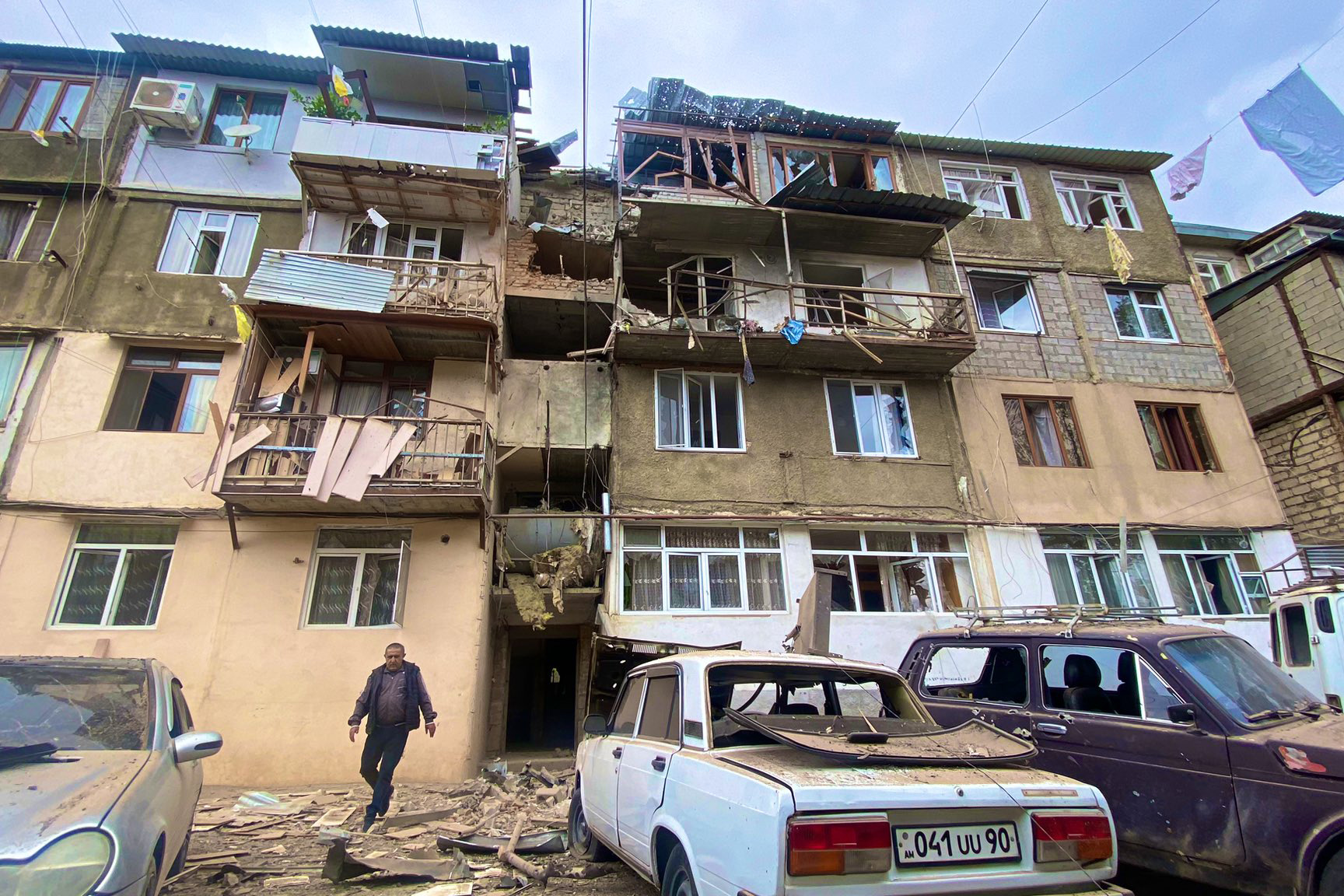
The authorities in Nagorno-Karabakh have confirmed that at least 200 people were killed and over 400 wounded. Of those killed, at least 10 were reportedly civilians, including five children.
Azerbaijani authorities have not released casualty figures. However, independent Azerbaijani news site MeydanTV reported to have confirmed the identity of 80 soldiers killed in the fighting, by checking with local municipal authorities, family members of those killed, and other sources. Independent journalist Habib Muntazir said he had already confirmed the deaths of over 100 people.
According to the authorities in Nagorno-Karabakh, over 10,000 people were displaced, while many remain missing.
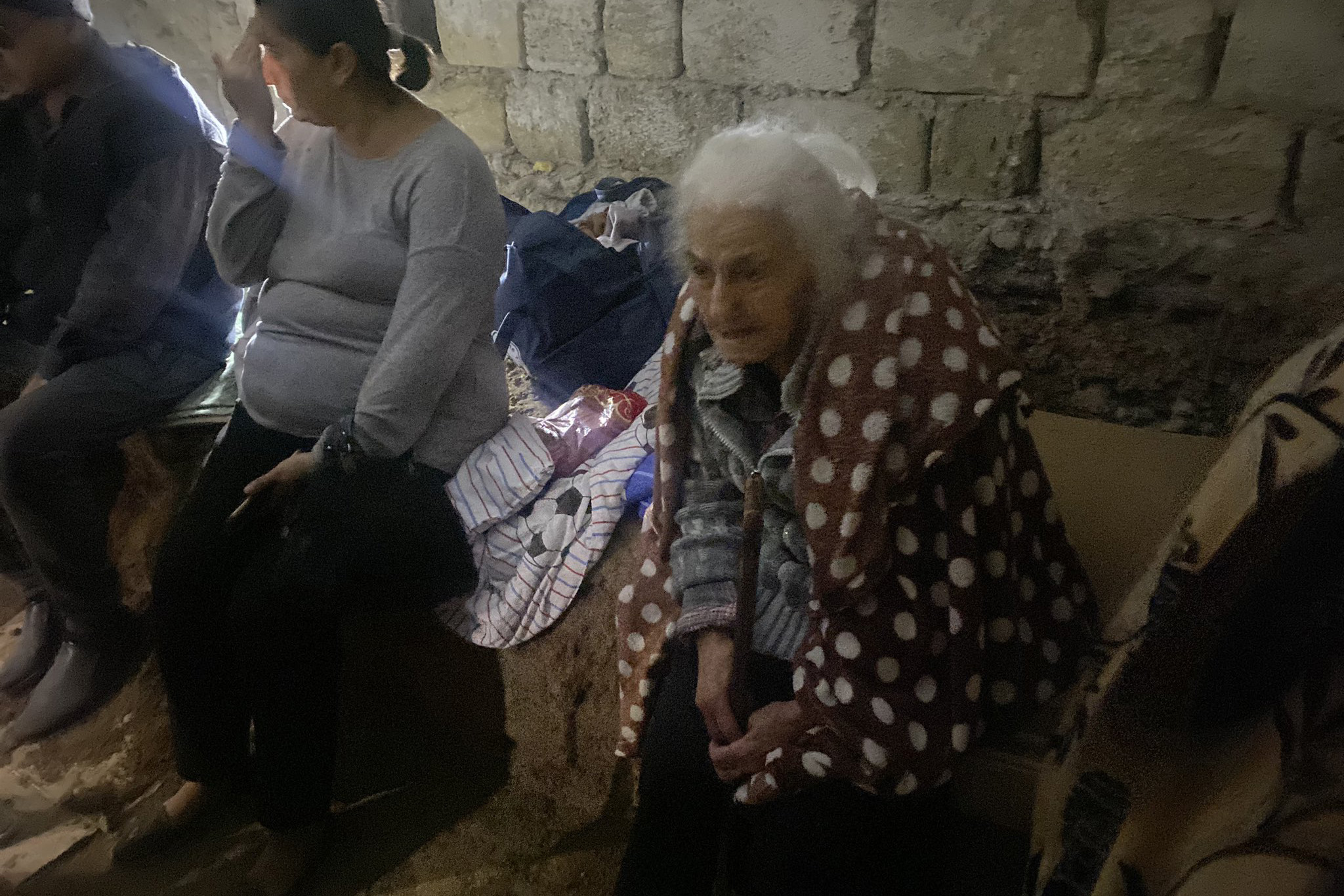
The Russian peacekeeping mission said that 1,340 people were at their base in the region, including 607 children.
The power supply to Nagorno Karabakh has not yet been restored, after being taken offline on Tuesday afternoon following a reported Azerbaijani strike. The authorities there reported that ‘a number of substations feeding the electrical system’ were under Azerbaijani control and that they were negotiating with the Russian peacekeepers in an attempt to resolve the situation.
Marut Vanyan, a journalist from Stepanakert, described the situation as ‘horrible’.
‘Smells smoke everywhere in Stepanakert’, he said. ‘People looking outside. No electricity. Mobile connection/Internet is weak. Been in the Hospital this morning. Just horrible…’
While the authorities in Stepanakert have remained vague about the advances by Azerbaijani forces prior to the ceasefire, Armenian journalist Tatul Hakobyan claimed to have mapped much of their losses.
He said Azerbaijan’s armed forces had taken control of two of the outer districts of Stepanakert, Armenavan (Krkzhan) and Ajapnyak (Malibeilu), as well as positions in the village of Drombon (Heyvaly) in the north.
He also reported that Azerbaijani forces had cut several major roads, including the road between Martuni (Khojavand) and Stepanakert. He additionally confirmed earlier reports that Azerbaijani troops had taken control of the Amaras monastery, a mediaeval Armenian monastery and important religious and cultural site.
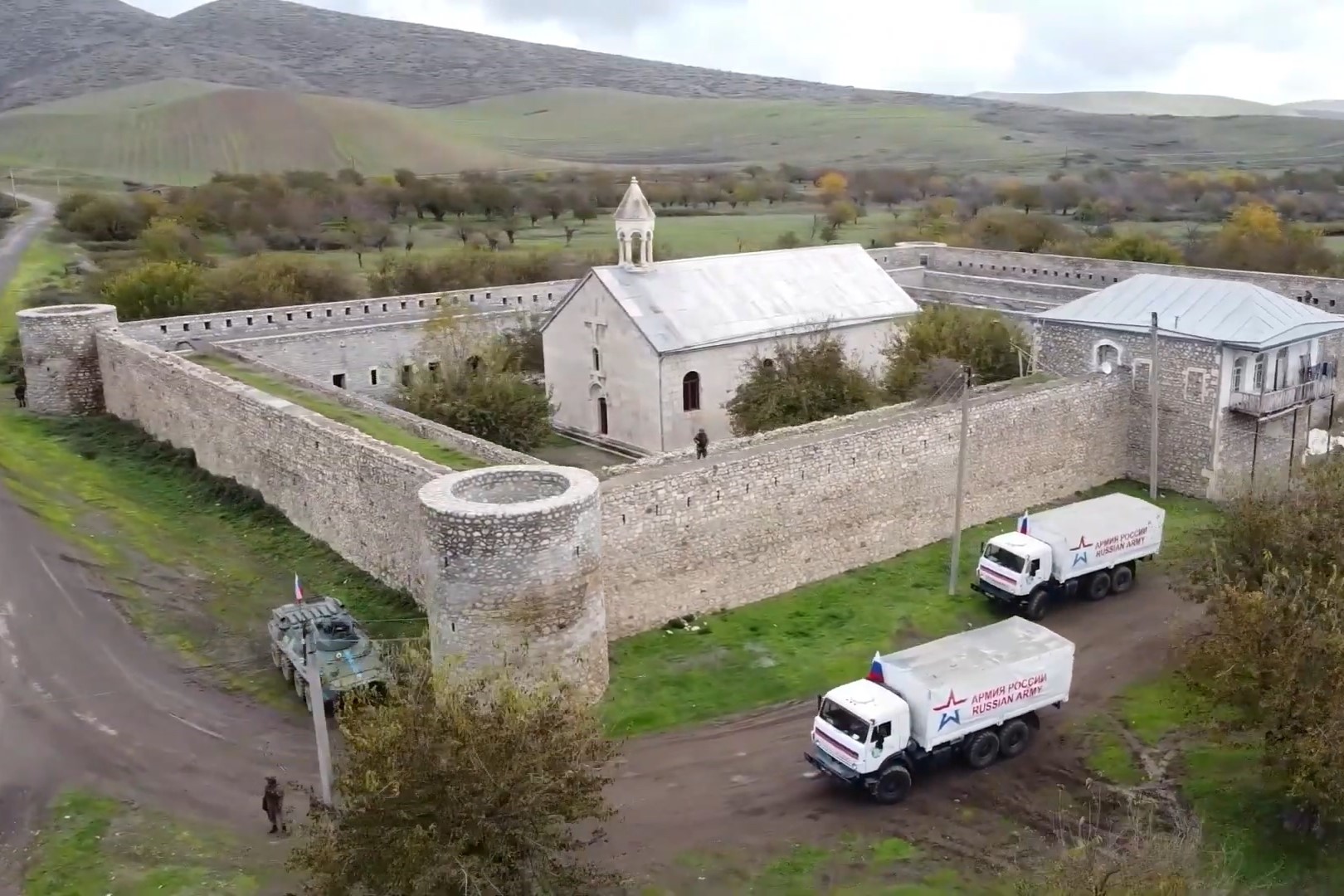
Martakert (Aghdara), one of the largest towns in Nagorno Karabakh, had also been cut off from Stepanakert, he said. CivilNet confirmed that Martakert had been surrounded, with its residents stuck inside.
A number of Russian peacekeepers were also killed after their vehicle came under fire. While Azerbaijan has claimed that they were killed by forces from Nagorno-Karabakh, in a phone conversation on Thursday, Azerbaijan’s President Ilham Aliyev apologised to Russian President Vladimir Putin and offered to compensate their families.
Russia’s Defence Ministry also stated that the Azerbaijani soldiers responsible for the peacekeepers’ deaths had been discharged from Azerbaijan’s armed forces.
While paying tribute to the Russian peacekeepers who died, Russian foreign ministry spokesperson Maria Zakharova again blamed Armenia for what happened.
The fate of the people of Nagorno-Karabakh
As negotiations continue between officials from Nagorno-Karabakh and Azerbaijan over the future of the region’s Armenian population, there is uncertainty over how many, if any, will choose to stay.
Anecdotal evidence suggests that many are hoping to leave. Speaking on the Caucasus Digest on Wednesday evening, Knar Khudoyan, a Yerevan-based journalist, told OC Media that members of her family she had spoken to in Nagorno-Karabakh were already searching for a way to reach Armenia.
On Wednesday, there were widespread reports that thousands of people had gathered at Stepanakert airport. Tigran Grigoryan, a Yerevan-based political analyst from Nagorno-Karabakh, said they were stuck without food or water.
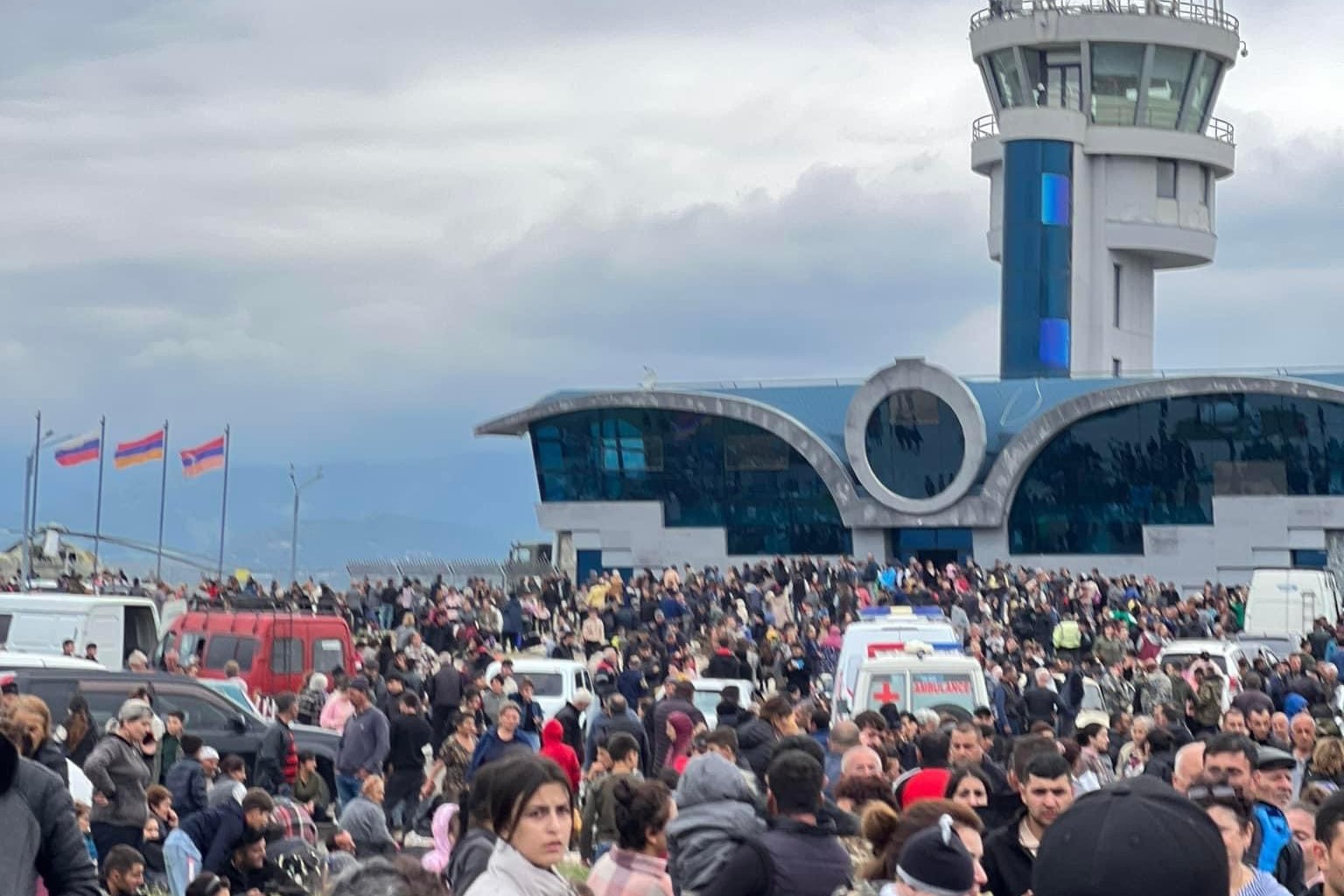
Armenian media also reported on Thursday that people were carrying out civil disobedience actions in Yerevan, demanding the Armenian authorities open a humanitarian corridor and ensure the safe transfer of Nagorno-Karabakh’s population to Armenia.
Despite the concerns and calls for the Armenian government to help facilitate people’s evacuation to Armenia, in his address on Thursday, Pashinyan said they had assessed that ‘at this moment […] there is no direct threat to the civilian population’ of Nagorno-Karabakh.
Earlier that day, the PM’s office told Armenpress that the government ‘does not seek the displacement of the Armenians of Nagorno-Karabakh and believes that the rights of the Armenians of Nagorno-Karabakh to live safely and in dignity in their homes must be guaranteed.’
They added that if their situation became ‘impossible’, ‘the necessary decisions will be taken’.
Before Thursday’s meeting, Tom de Waal from Carnegie Europe told OC Media that much depended on what, if any, concessions Azerbaijan made. He remained sceptical, pointing to the lack of education and language rights other ethnic minorities in Azerbaijan are granted.
‘A lot depends on how Azerbaijan conducts itself, […] what, if anything, happens to those Armenians who choose to stay in Karabakh, and what kind of existence they lead’, he said.
‘We’re looking at a very — I think what the Karabakh Armenians would think of as — a very restrictive and punitive arrangement for them.’
‘To be honest, under those conditions, a lot, if not a majority of the Karabakh Armenians will simply be unable to live in Azerbaijan and just leave.’
For ease of reading, we choose not to use qualifiers such as ‘de facto’, ‘unrecognised’, or ‘partially recognised’ when discussing institutions or political positions within Abkhazia, Nagorno-Karabakh, and South Ossetia. This does not imply a position on their status.





